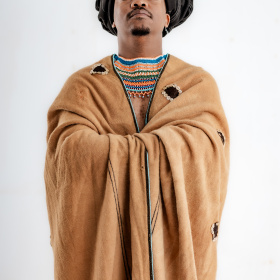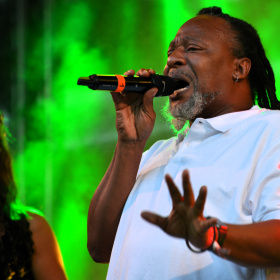Bobo-Dioulasso Provincial Museum of Music
Bio
The National Museum of Music in Ouagadougou began its collection in 1998 and has several hundred musical instruments including balafons and bara drums. Opened in 1990, a Provincial Museum of Music in Bobo-Dioulasso housing a number of traditional instruments.
The collection features the kora, a stringed instrument of the djeli. The instrument has been popular throughout much of West Africa since the Malian empire of the 1240s. The instrument traditionally featured seven strings until the Gambian griot Madi Woulendi increased that number to twenty-one. The kora can be played in several scales including the hypolydian mode (saouta), silaba, sim'bi and mandéka.
There is the balafon, a kind of wooden xylophone, the exact characteristics of which can vary depending on the maker. The Dagara, Bwa and Senufo peoples also have their own varieties.
In addition, the collection has Djembe drums, like balafons, which are often manufactured in Bobo Dioulasso. The djembe, a vital part of Burkinabé traditional music, is said to be of Malinké origin. It is made from a single piece of wood, usually from a caïlcedrat or lenke tree.
The bendré drum (called bara in Mali and dumaa among the Hausa) is a membranophone made from a gourd with the top cut off and covered with goat or sheep skin. It is an ancient instrument, probably introduced during the reign of Naaba Oubri to be played in sacred music at the royal courts of Moaga by a head drummer (benaaba) who strikes the center or edges of the drum to make varying sounds.
Another stringed instrument is called the n'goni. Legend says it was invented by a Senufo hunter. The n'goni is also played in Niger, Senegal and Mali.
The Fula people (Fulbe) of the north play a variety of traditional instruments including drums, hoddu (or xalam, a plucked skin-covered lute related to the banjo) the and riti or riiti (a one-string bowed instrument), and use complex vocal techniques with clapping percussion. Their griots are known as gawlo.
The music of Burkina Faso includes the folk music of 60 different ethnic groups. The Mossi people, centrally located around the capital, Ouagadougou, account for 40% of the population while, to the south, Gurunsi, Gurma, Dagaaba and Lobi populations, speaking Gur languages closely related to the Mossi language, extend into the coastal states. In the north and east the Fulani of the Sahel preponderate, while in the south and west the Mande languages are common; Samo, Bissa, Bobo, Senufo and Marka. Burkinabé traditional music has continued to thrive and musical output remains quite diverse. Popular music is mostly in French: Burkina Faso has yet to produce a major pan-African success.














